Via ferrata routes offer the perfect blend of hiking and rock climbing, giving adventurers a taste of vertical thrills without requiring years of technical training. These ‘iron roads’ feature fixed cables, ladders, and bridges that guide climbers up dramatic cliff faces and across breathtaking gorges. Think of them as nature’s jungle gyms for adults, complete with safety harnesses and stunning mountain views.
From the birthplace of via ferrata in the Italian Dolomites to modern routes scattered across the globe, these protected climbing paths have opened up previously inaccessible terrain to everyday adventurers. Here is a list of 18 via ferrata routes that showcase the best vertical adventures our planet has to offer.
Via delle Bocchette Centrali
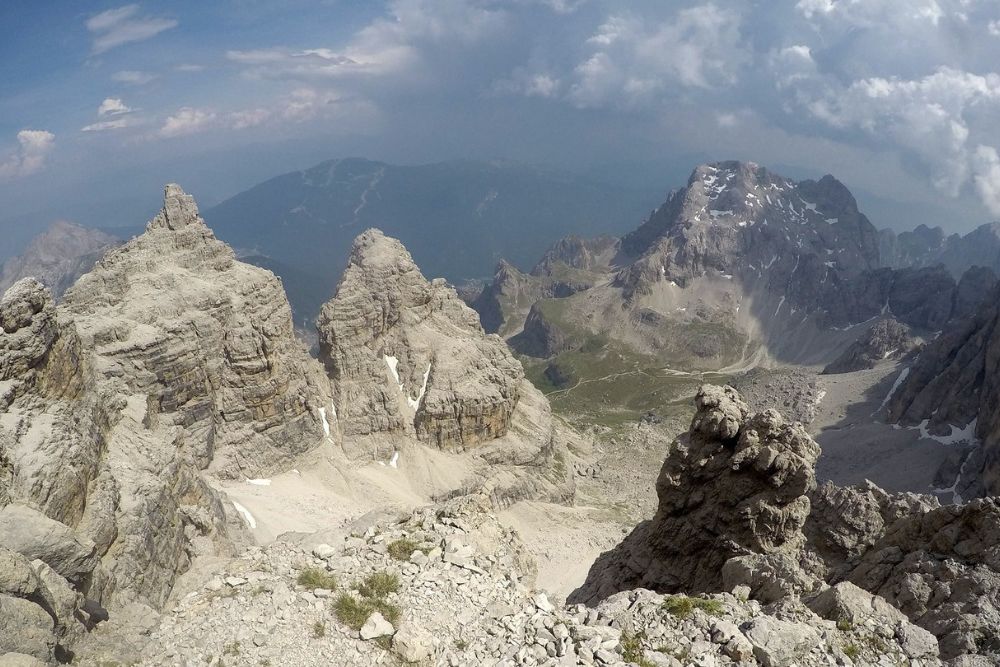
Stretching across the Brenta Dolomites, this epic route covers nearly 6 miles of exposed ridge walking and vertical climbing. The path connects multiple peaks through a series of cables and ladders that would make mountain goats jealous.
Advanced climbers often tackle this as a multi-day adventure, staying in mountain huts along the way.
Klettersteig Intersport
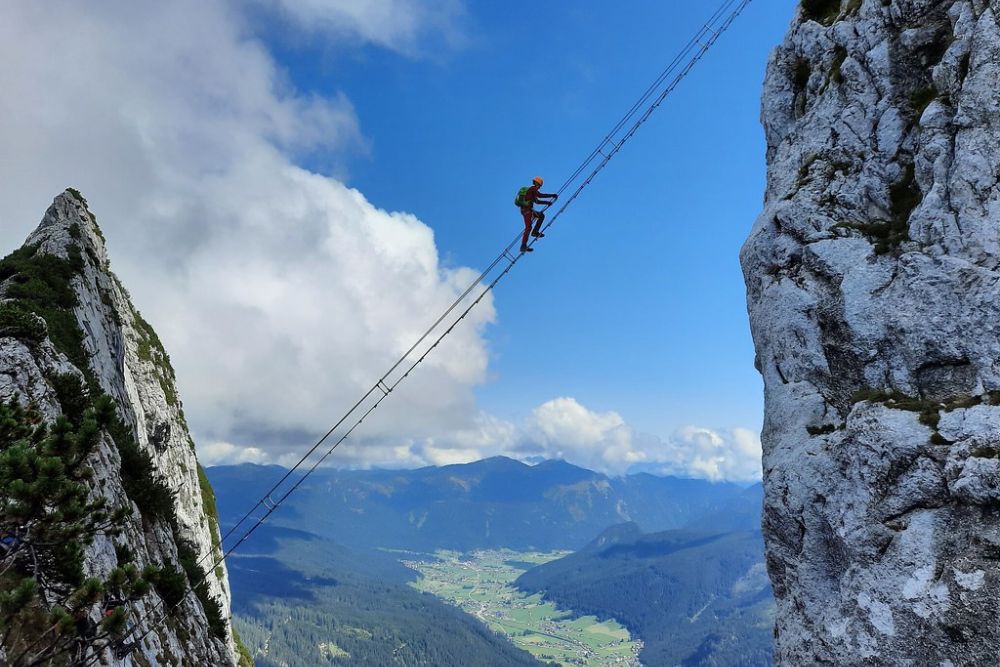
Located in Austria’s Zillertal Alps, this modern via ferrata combines traditional climbing elements with innovative bridge crossings. The route features a spectacular 300-foot suspension bridge that spans a dramatic gorge, creating an adrenaline rush that rivals any theme park ride.
The entire experience typically takes four to five hours to complete.
Like Travel Pug’s content? Follow us on MSN.
Via Ferrata del Colodri
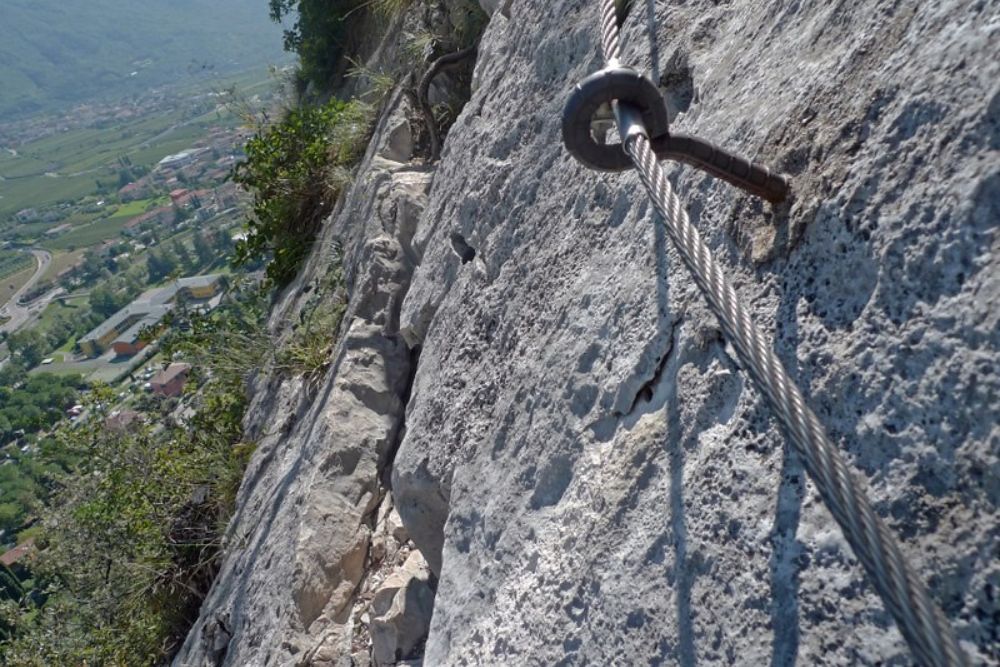
Perched above Lake Garda in northern Italy, this route offers some of the most photogenic climbing in Europe. The path ascends the vertical walls of Monte Colodri, providing panoramic views of the lake below and the surrounding vineyards.
What makes this route special is its proximity to civilization, allowing climbers to enjoy a proper Italian dinner just minutes after completing their vertical adventure.
Via Ferrata Giovanni Lipella
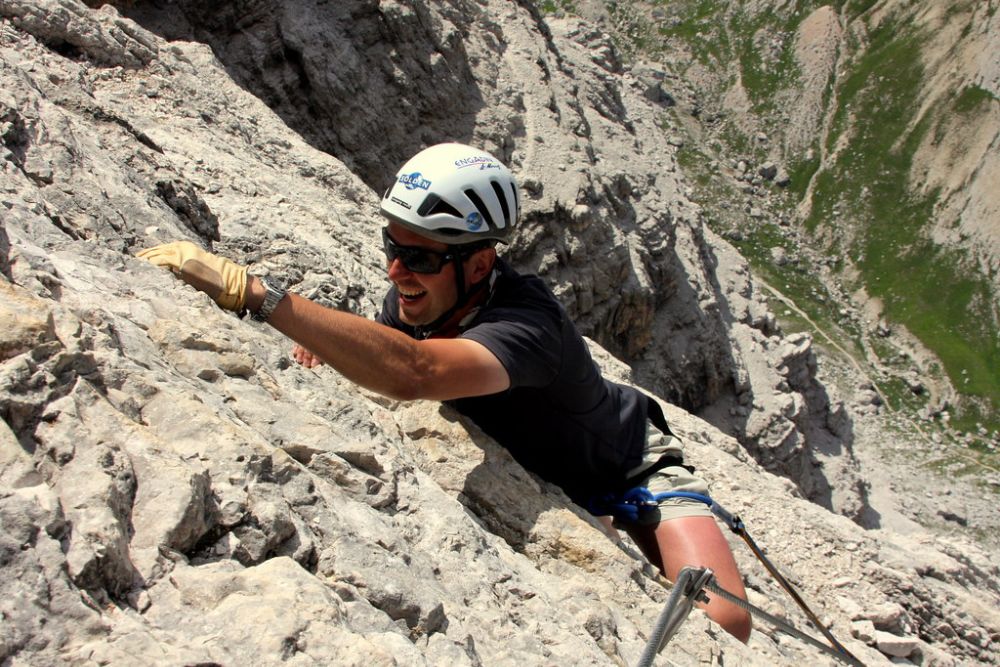
Tucked away in Italy’s Brenta Dolomites, this challenging route demands respect from even experienced climbers. The path features some of the most sustained vertical climbing found on any via ferrata, with sections that feel more like pure rock climbing than hiking.
The route’s reputation for difficulty means it attracts serious adventurers looking to push their limits.
Dachstein Sky Walk
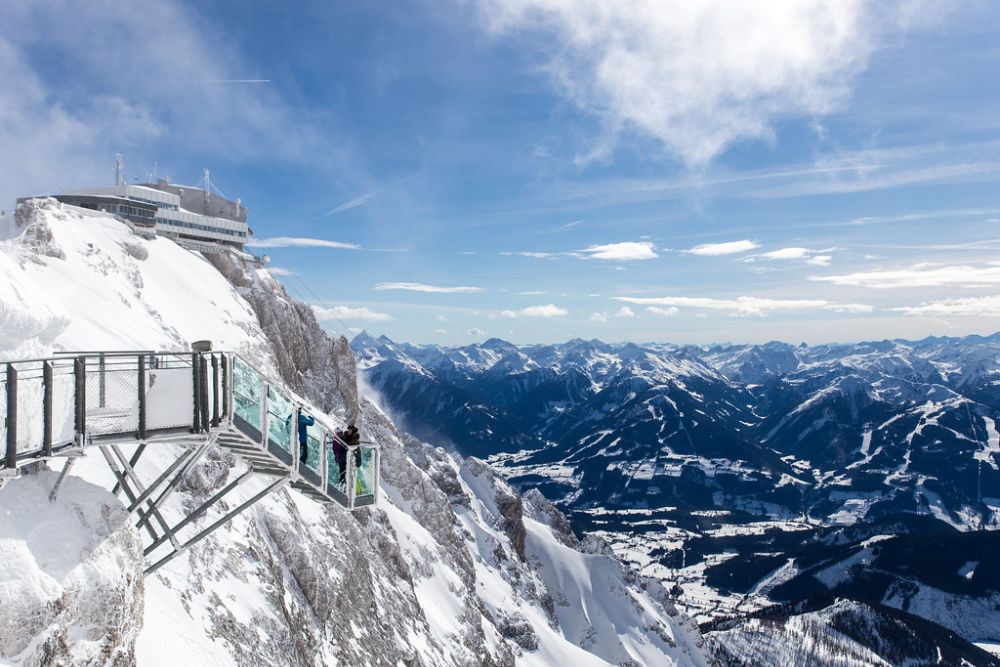
Austria’s Dachstein region offers this spectacular route that combines via ferrata climbing with glacier viewing. The path leads climbers across suspension bridges and up cable-protected walls to reach viewing platforms overlooking ancient ice fields.
The contrast between the warm rock and the cold glacier creates a unique mountain experience.
Like Travel Pug’s content? Follow us on MSN.
Via Ferrata Brigata Tridentina
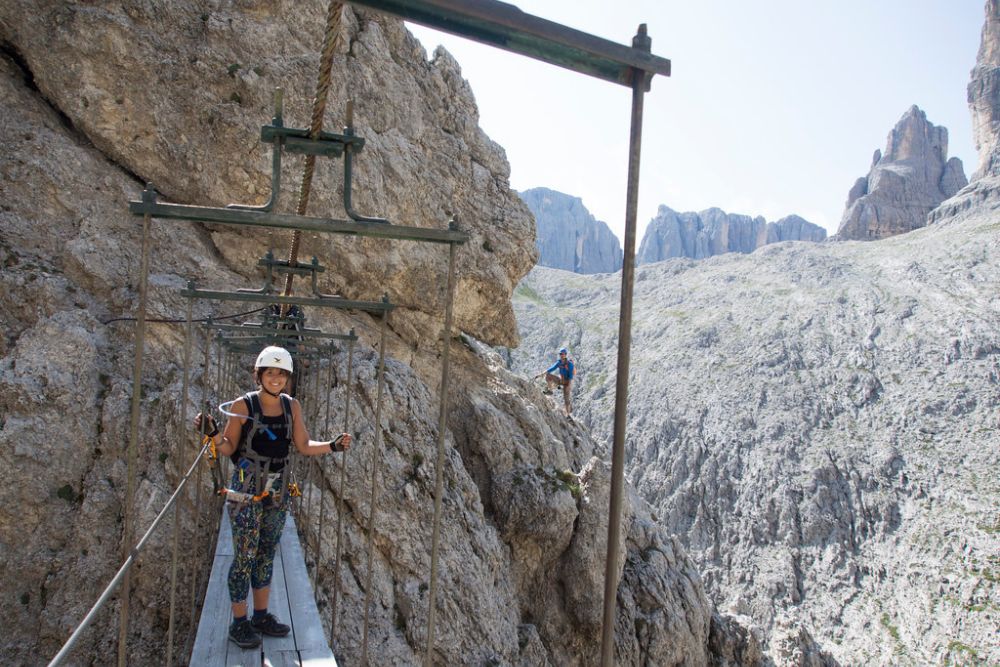
This Italian route in the Sella Group stands out for its historical significance and technical challenges. Originally constructed during World War I as a military path, the modern via ferrata follows much of the original route while adding safety features.
The combination of history and adventure creates an emotionally powerful climbing experience.
Klettersteig Pinut
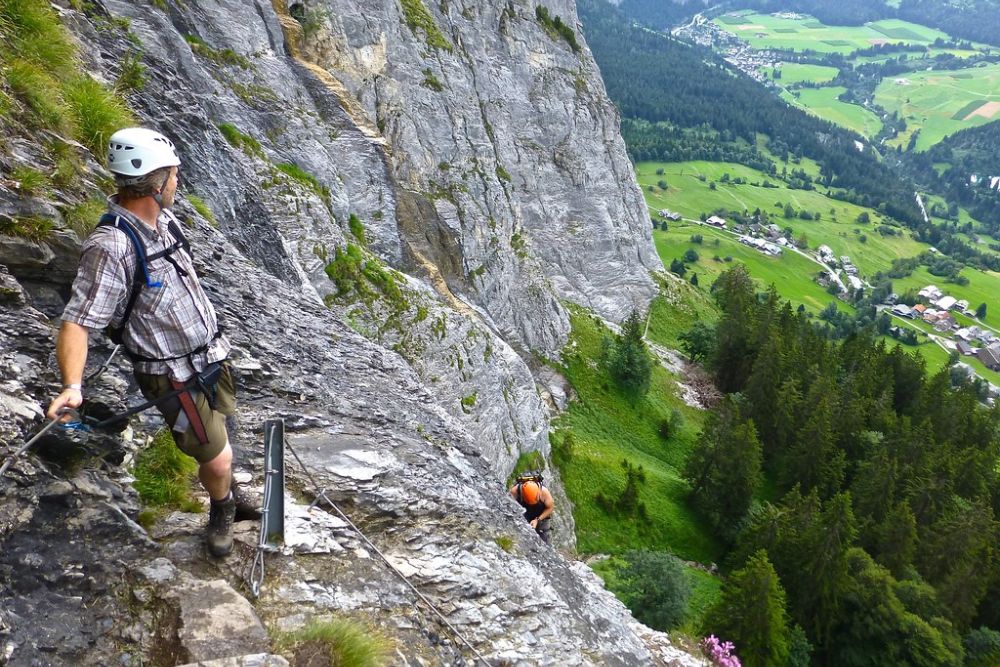
Located in Switzerland’s Engadin Valley, this route showcases Alpine engineering at its finest. The path navigates a series of technical cliff sections using a combination of cables, ladders, and artificial handholds carved directly into the rock.
Swiss precision shows in every detail, from the placement of safety cables to the strategic positioning of rest platforms.
Via Ferrata Tomaselli
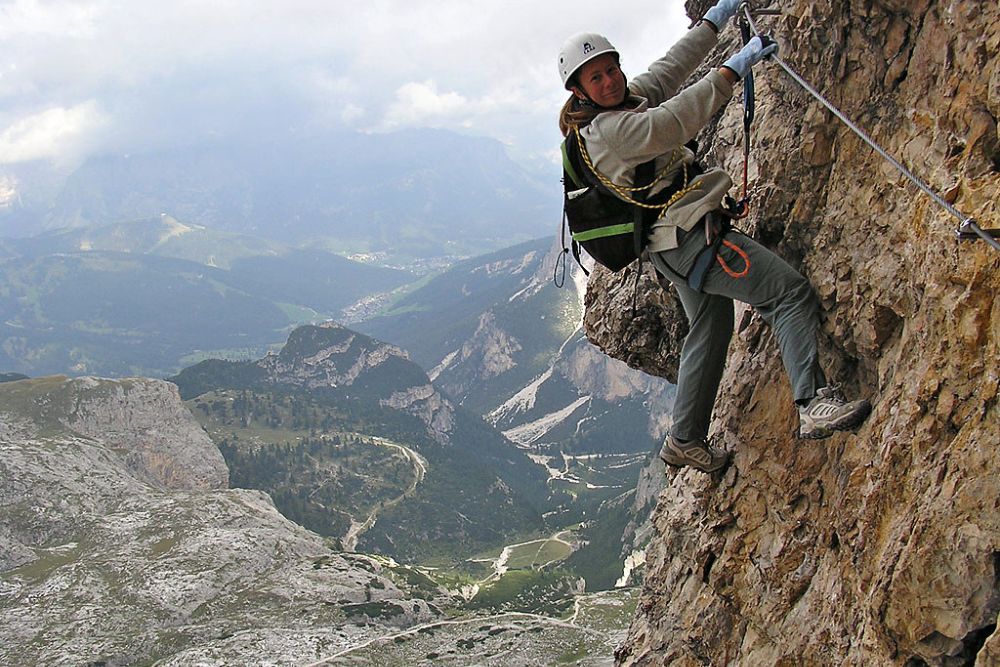
This challenging Italian route in the Cortina area pushes climbers through some of the most exposed terrain in the Dolomites. The path includes several sections where climbers traverse horizontal cables across sheer cliff faces, creating the sensation of flying.
Advanced route-finding skills become essential as the path weaves through complex rock formations.
Like Travel Pug’s content? Follow us on MSN.
Mammoth Via Ferrata
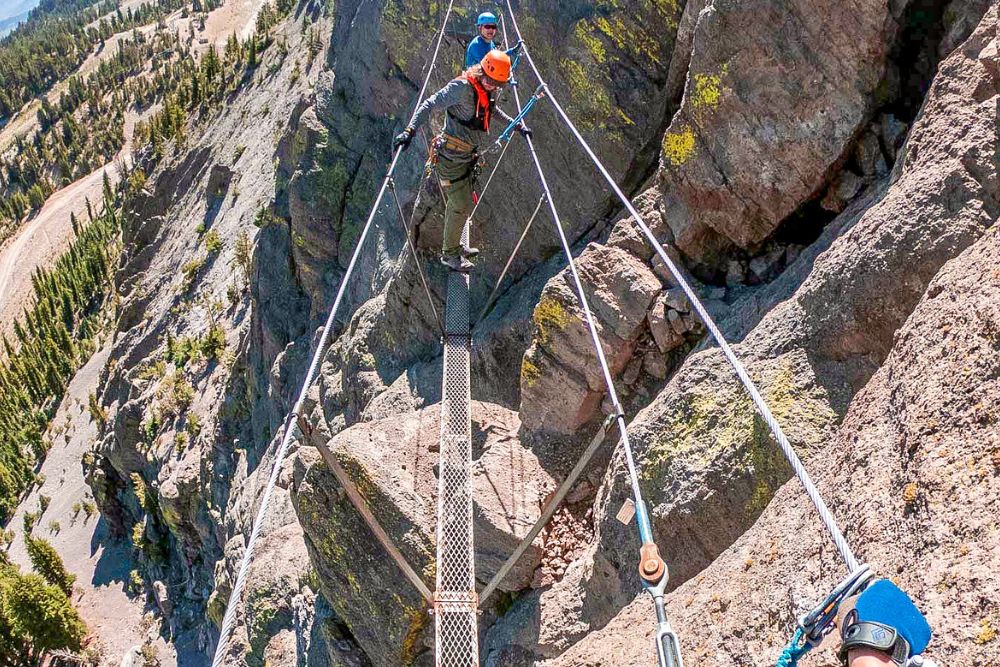
California’s first via ferrata brings European-style climbing to the American Sierra Nevada. Located near Mammoth Lakes, this route features dramatic granite cliff climbing with views of the surrounding volcanic landscape.
The contrast between the solid granite and the loose volcanic rock creates a uniquely American via ferrata experience.
Nelson Rocks Via Ferrata
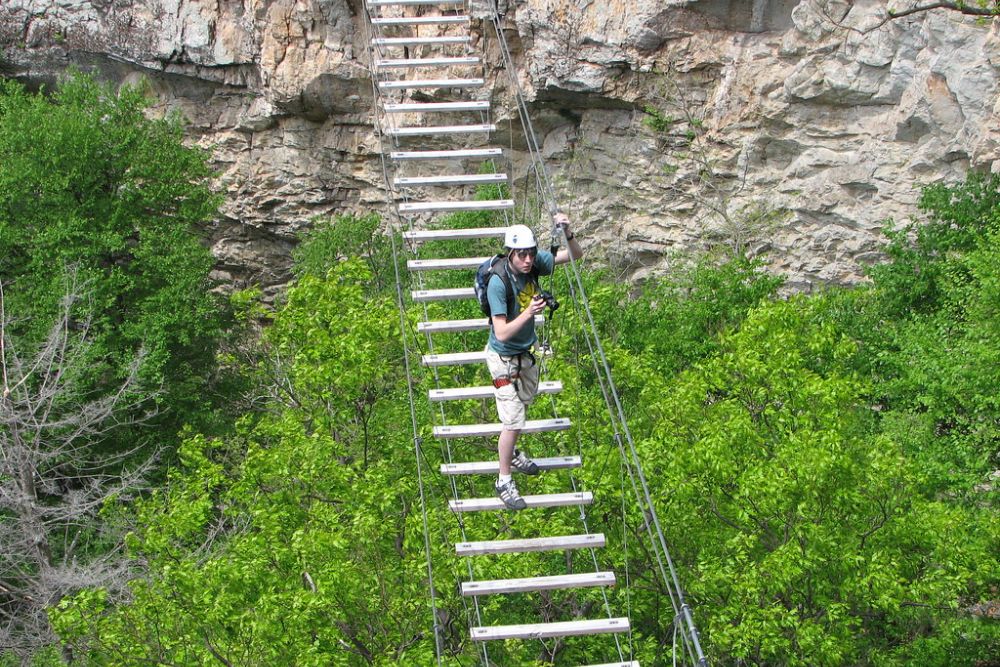
West Virginia’s contribution to via ferrata climbing takes advantage of the region’s excellent sandstone cliffs. This route offers East Coast climbers their first taste of European-style protected climbing without crossing an ocean.
The path includes several ladder sections and a memorable traverse that showcases the beauty of Appalachian cliff country.
Whistler Via Ferrata
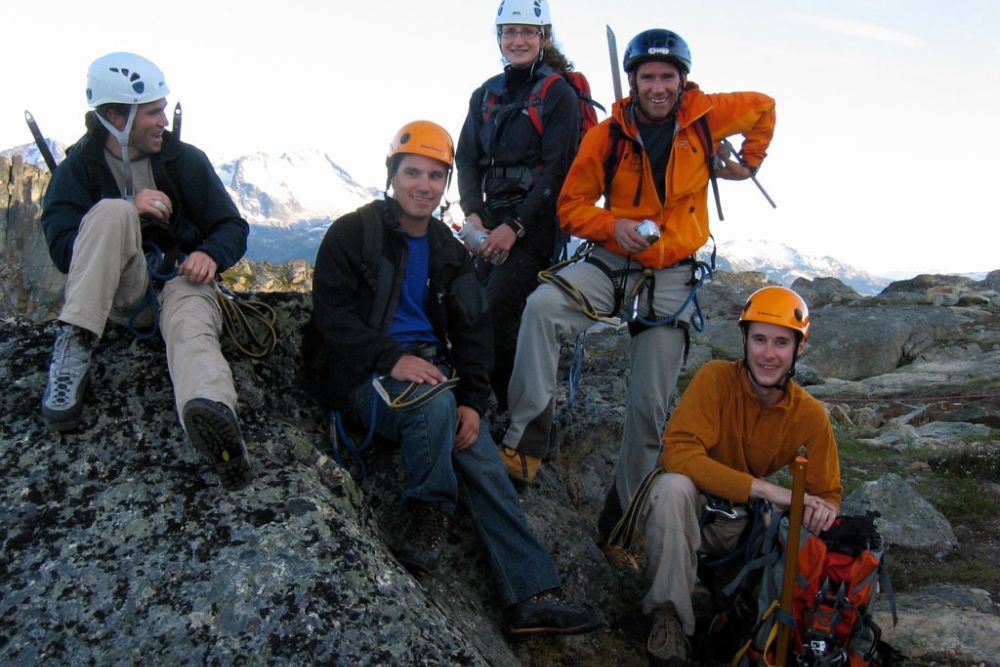
Canada’s premier via ferrata combines mountain climbing with stunning Pacific Northwest scenery. Located above Whistler Village, the route provides breathtaking views of the surrounding peaks and valleys while challenging climbers with technical cliff sections.
The proximity to world-class skiing makes this a year-round adventure destination.
Like Travel Pug’s content? Follow us on MSN.
Via Ferrata de la Cala del Molí
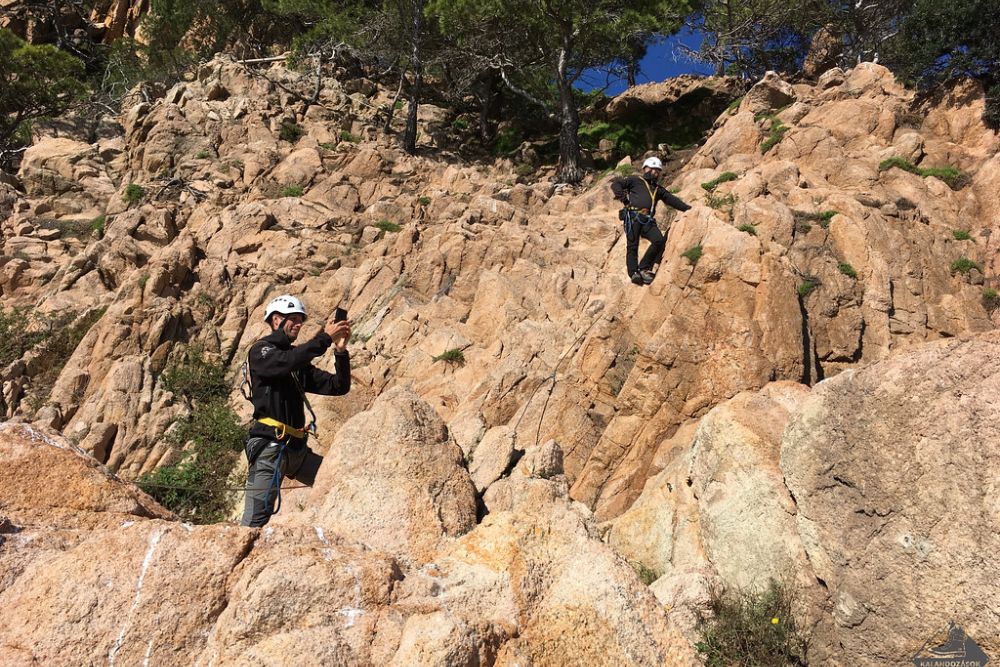
Spain’s Costa Brava offers this unique seaside via ferrata that combines rock climbing with Mediterranean views. The route follows dramatic coastal cliffs, providing a completely different perspective on via ferrata climbing.
Ocean breezes and seabird calls replace the typical mountain atmosphere found on most routes.
Klettersteig Lehner Wasserfall
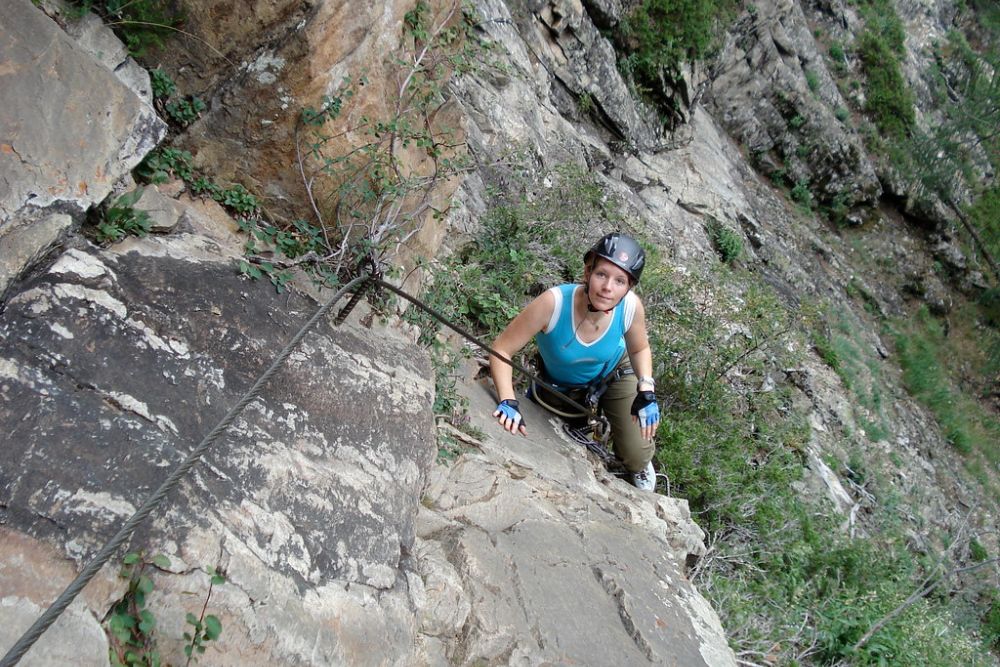
This Austrian route near the village of Längenfeld showcases the power of water and rock working together. The path climbs alongside a spectacular waterfall, with mist from the cascading water providing natural air conditioning during summer climbs.
The constant sound of rushing water creates a meditative backdrop for the physical challenge of climbing.
Via Ferrata Rio Sallagoni
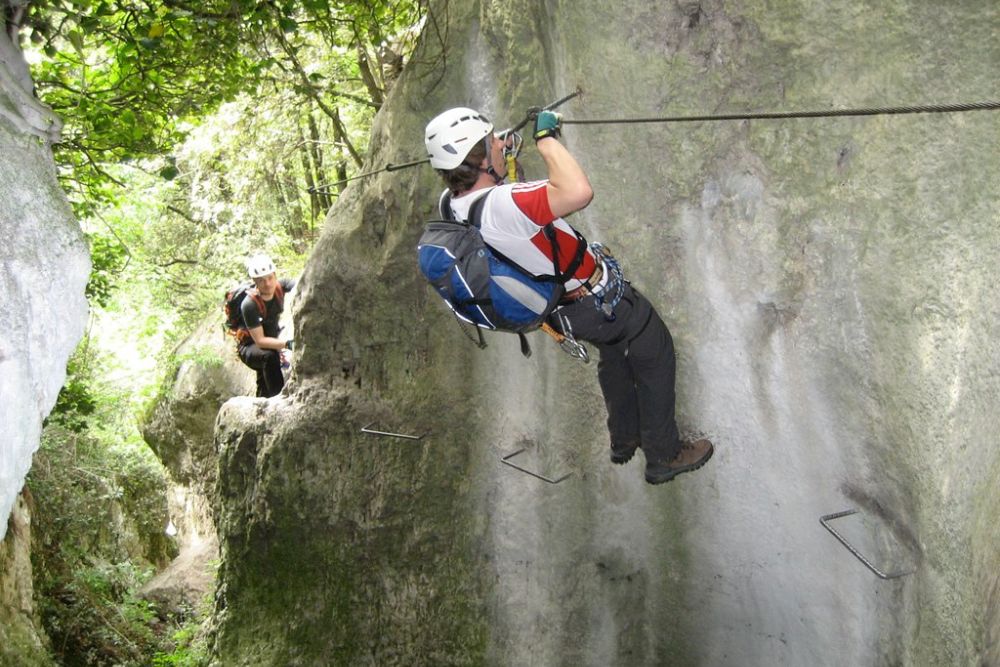
Located in Italy’s Trentino region, this route follows a dramatic river gorge that feels like something from a fantasy novel. The path includes multiple bridge crossings over the rushing river below, creating an adventure that combines vertical climbing with water features.
The route’s relatively short length makes it perfect for families looking to try via ferrata climbing.
Like Travel Pug’s content? Follow us on MSN.
Flaming Gorge Via Ferrata
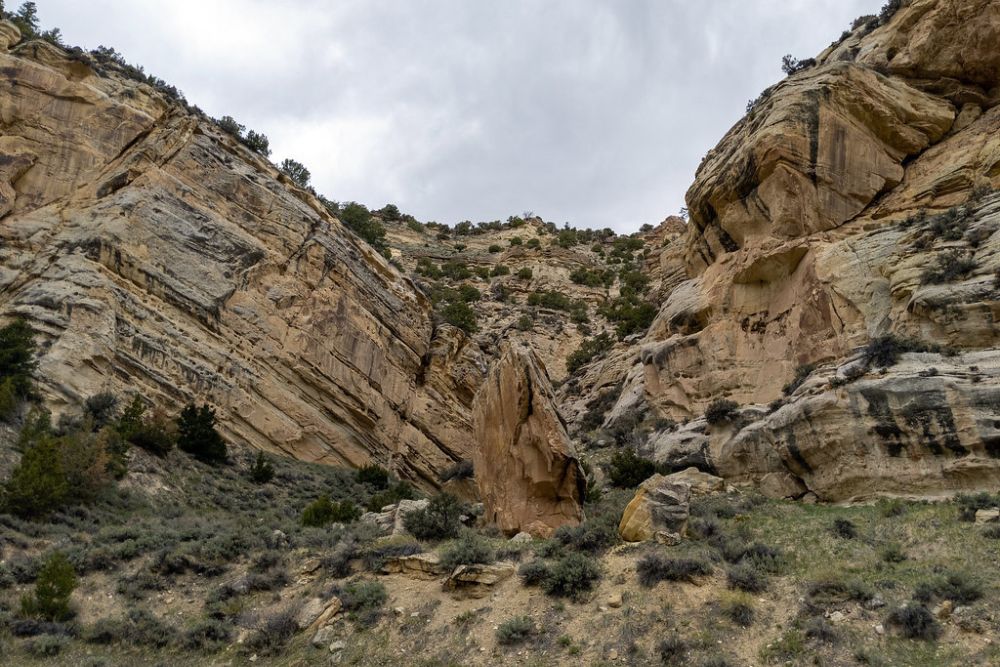
Utah’s contribution to American via ferrata takes advantage of the state’s incredible red rock formations. This route provides climbers with classic Southwestern desert views while challenging them with technical sandstone climbing.
The contrast between the red rock and blue sky creates some of the most photogenic via ferrata climbing in North America.
Via Ferrata Alpinisteig
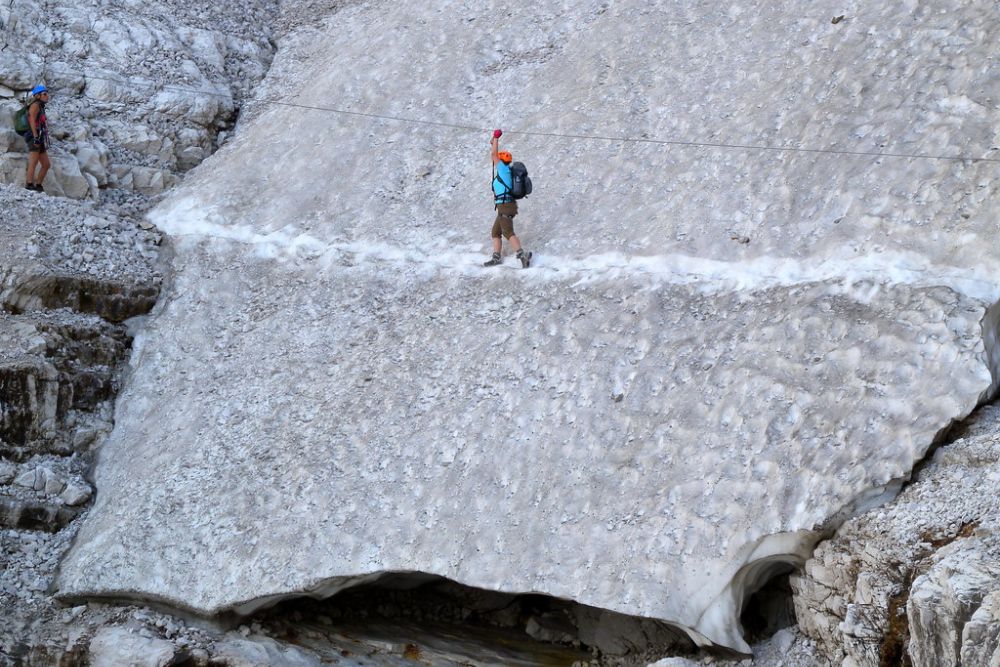
This German route in the Allgäu Alps demonstrates how via ferrata can open up previously inaccessible terrain to everyday climbers. The path navigates through complex limestone formations using a series of cables and artificial aids that would be impossible to climb without protection.
Advanced engineering makes the impossible seem routine.
Klettersteig Mahdlgupf
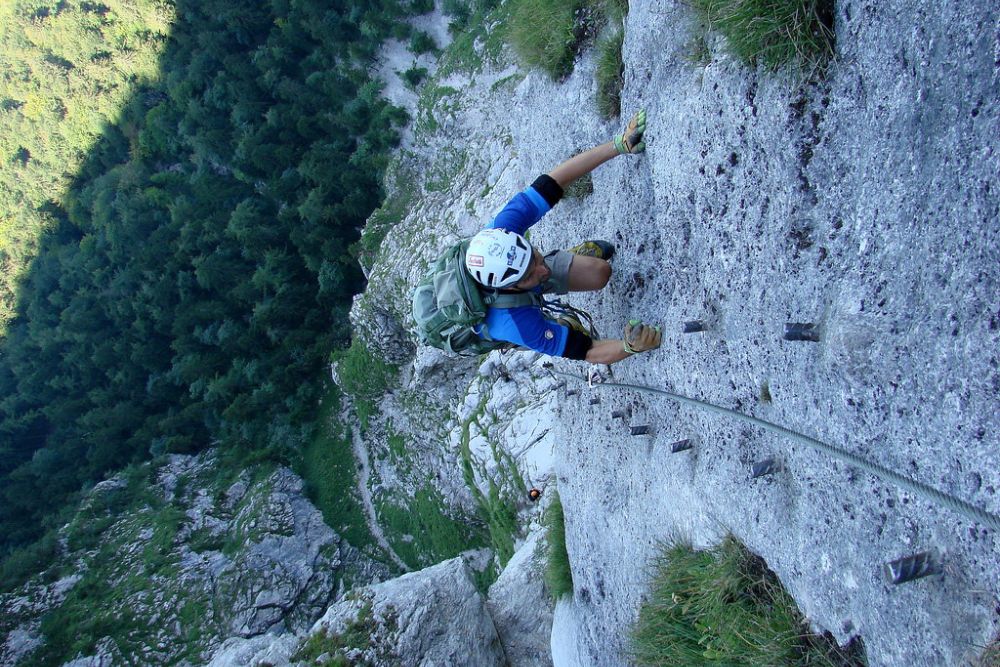
Austria’s Tyrol region offers this challenging route that pushes experienced climbers to their limits. The path includes several sections of overhanging rock that require upper body strength typically associated with pure rock climbing.
The route’s reputation for difficulty means it attracts climbers looking to test their skills against some of Europe’s most challenging via ferrata terrain.
Like Travel Pug’s content? Follow us on MSN.
Via Ferrata Strada degli Alpini
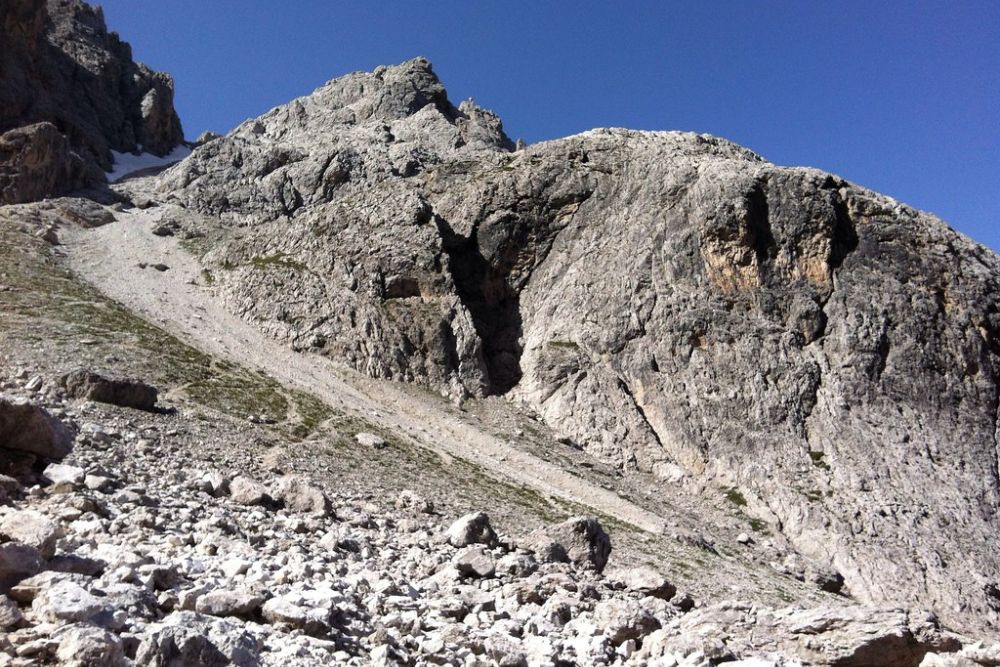
This Italian route in the Pasubio region combines historical significance with modern adventure climbing. Originally built as a military supply route during World War I, the modern via ferrata follows tunnels and galleries carved directly into the mountainside.
The unique combination of underground passages and exposed climbing creates an adventure unlike any other via ferrata experience.
Where Steel Cables Meet Mountain Dreams
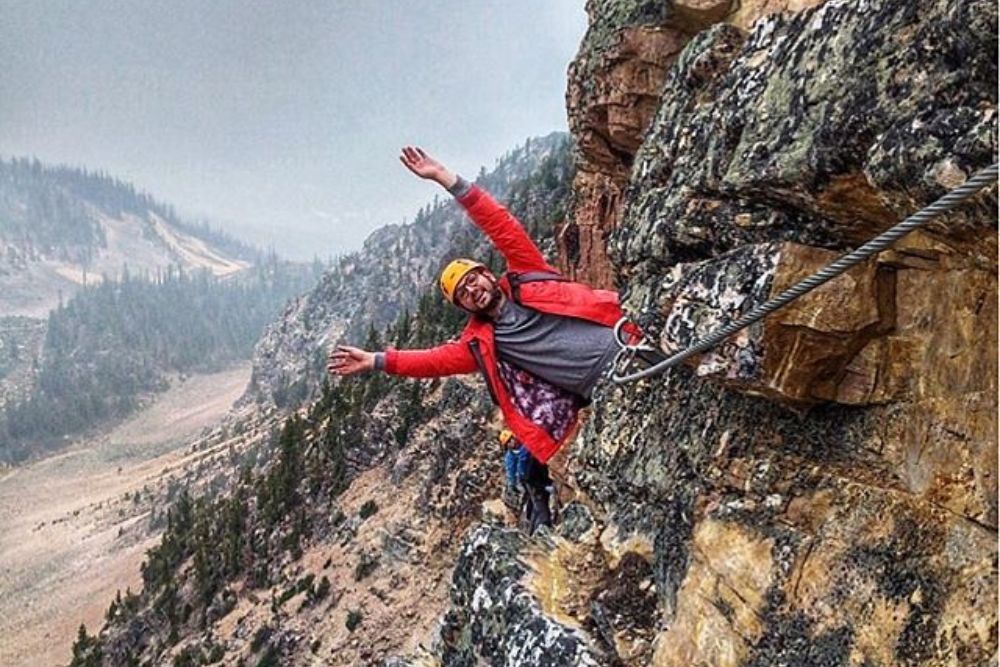
Via ferrata routes represent more than just climbing adventures—they’re bridges between our modern world and the ancient call of the mountains. These steel cables and iron rungs have democratized vertical terrain that once belonged only to elite climbers, opening up some of the planet’s most spectacular landscapes to anyone with determination and a head for heights.
From the war-torn cliffs of the Dolomites to the red rocks of Utah, via ferrata continues to evolve, creating new ways for humans to dance with gravity. The next time you find yourself staring up at an impossible cliff face, remember that somewhere up there, a via ferrata might be waiting to show you the way to the top.
More from Travel Pug

- 20 Best Beach Towns in the Carolinas
- 13 Destinations Where Tourists Regularly Regret Their Trip
- 20 Things You Actually Get in First Class
- 20 Small Airports With Aviation Museums
- 20 Places in the U.S. That Are Perfect for a Reset Trip
Like Travel Pug’s content? Follow us on MSN.
